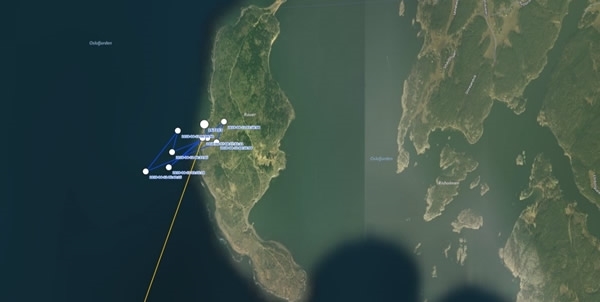
By Chris Heward, Wetlands Research Assistant
Holkham is our only ‘new’ woodcock this year. The rest of our 2018 birds were tagged in previous years and have already shared spring migration data for one, two, three or, in Wensum’s case, five previous years. For Holkham, this is the first migration that we have tracked.
Holkham was the last bird to leave the UK and was still at her wintering site in Norfolk on the 30th March. We received an ‘unreliable’ transmission from western Denmark on the 4th April which, despite its low accuracy rating (based on the number of satellites detected), seems plausible.
The next accurate transmission came 3 days later, on the 7th April, from southern Norway. This is where Holkham currently remains. We have had nine transmissions in total from the small Norwegian island of Rauer in the Oslofjord. As the name would suggest, this is the sea inlet on which the city of Oslo is situated. To me, it seems unlikely that she will remain here for the rest of the breeding season, but Rauer is reasonably large and well-forested so she might be able to breed here.
We think it’s likely that Holkham has made one previous spring migration, before we tagged her. Usually, we can only age woodcock as ‘juvenile’, i.e. they are still in their first year and have made just one autumn migration in their life, or ‘adult’, an ‘unknown’ age greater than one year. This is determined from the bird’s plumage, with feathers grown in the first year tending to differ very slightly in shape and colour to those of an adult.
Holkham was unusual in that she had a mixture of both adult and juvenile feathers. This would suggest that Holkham was hatched in 2016. In 2017, she moulted into her new adult plumage and, whilst most woodcock would moult all their feathers at this point, Holkham retained a few juvenile feathers that allows us to age her as a ‘second year’. When Holkham moults in late summer this year, these last few juvenile feathers will be shed.
Please contribute to our vital woodcock research